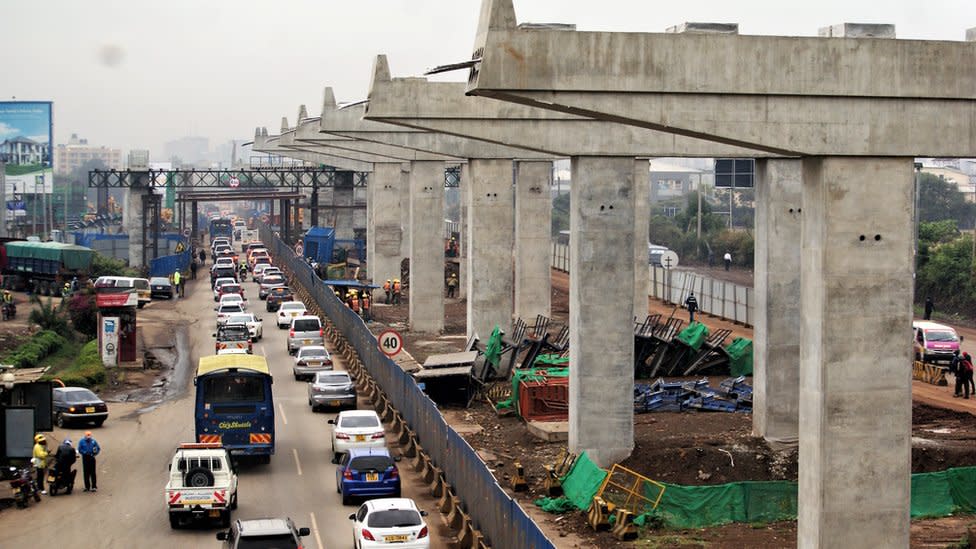
In our series of letters from African journalists, Ismail Einashe addresses Kenya’s transportation problems while stuck in traffic in the capital.

On another hot, sticky Nairobi afternoon, I find myself stuck in another hour-long traffic jam on the city’s famous traffic-congested roads.
But in recent months, this situation has been made worse by the construction of the Nairobi Expressway, creating a new level of chaos in the capital.
When completed, it will be a 27 km (17 mi) highway, part of which is higher, that will connect Jomo Kenyatta International Airport in the east of the city with the Nairobi-Nakuru highway in the west.
The $ 550 million (£ 410 million) project will radically transform the city’s skyline and aims to ease traffic flows in and out of the center of East Africa’s main commercial hub.




Kenyan officials described the highway as a vital infrastructure project that will drive modernization.
The partially elevated highway was proposed about 10 years ago, but due to delays, it was only launched by President Uhuru Kenyatta in October.
Still, the speed of construction leaves a lot of Nairobians behind. It already looks like a giant cut across town and the constant buzz of construction noise, trucks blowing up dust and screeching car horns all add to the confusion.
‘Elites zoom above’
It is being funded and built by the China Road and Bridge Corporation (CRBC) – and the Chinese company will operate the highway under a public-private partnership.
This means that the four- and six-lane dual carriageway, with 10 interchanges along the route, will not be free to use – drivers will reportedly have to pay a toll between $ 2 and $ 3.
The goal of improving Nairobi roads seems commendable, but some argue that it could actually exacerbate the city’s traffic problems and its huge social and economic divide.




Most residents use matatus – the pimped private minibuses – or boda boda motorcycle taxis to get to and from work.
But the question remains whether these modes of transport can pay the toll for using the highway.
It could mean they are left in the traffic jams under the highway as the elite zoom past them.
Another point of contention is the environmental impact of the project. The international focus was on the famous Nairobi fig tree, saved by the president after a protest.
Still, hundreds of other trees are being cut down to make way for the new road, and campaigners have little faith that they will be replanted – and it will also mean the permanent loss of some green areas and destruction of bird habitats.
Many see it as a destruction of the legacy of Kenya’s Nobel Peace Prize winner Wangari Maathai, who was famous for major government-backed developments in Nairobi.
This highway project is the latest in Kenya’s China-backed infrastructure spending in recent years.
In 2019, I took the Standard Gauge Railway (SGR) from Nairobi to the port city of Mombasa – a comfortable six-hour journey, although the ticket price and check-in made it feel more like a flight.
The $ 3.2 billion railway project built and funded by China was intended to link the coast with the town of Naivasha, 76 km northwest of Nairobi, and then with the Ugandan capital Kampala.
But this has now been shelved as Kenya failed to secure funding from the Chinese to complete the line. For the time being, construction work is being postponed until the finances are finalized.
The SGR now puts Kenya in massive debt to China, with Chinese loans at risk of 21% of its foreign debt.
Some have wondered how wise the Nairobi Expressway is.
Regardless of the cost to Nairobians, it looks like this project will be completed – in fact, the Chinese company announced that the building would open six months ahead of schedule – just in time for Kenya’s next presidential election in 2022.
More letters from Africa:
follow us on twitter @BuienRadarNL, on Facebook on BBC Africa or on Instagram on bbcafrica




